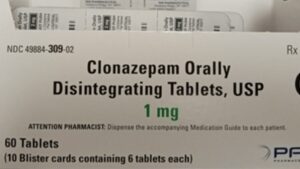Opioids and particularly fentanyl continue to devastate America and take over 80,000 lives each year. The government solution of ‘harm reduction’ doesn’t work. We need a new strategy.
Late in every election season, like clockwork, the party in power boasts remarkable results in routine reporting on jobs, the economy, manufacturing and more. Health is no exception: the U.S. Centers for Disease Control and Prevention (CDC) recently announced their agency’s data indicated a 10% reduction in overdose deaths in 2024.
This October surprise would be a welcome and hopeful trend. In reality, even if this finding is confirmed, the number of overdose deaths is still at about 100,000 per year, with the great majority due to opioids, mainly fentanyl. If the 10% reduction is real, it is nowhere near enough.
In recent years, the United States has tragically seen historic numbers of opioid overdose deaths. The last two years considered alone would be 33% of the total number of deaths that occurred over the previous two-plus decades. That’s abominable.
OVERSEAS METH SENT TO US ELECTION BUILDING SHUTS DOWN OFFICE FOR HOURS
The opioid crisis has been here since the mid-1990s and has gone through several phases. It began with a misguided notion that prescribers should relieve any pain by any means, no matter what. This was often with large dosages of opioids. Shored up by the myth that people with pain would not develop a drug-use disorder, millions were over-prescribed opioid analgesics.
As a result, millions of pain patients became misusers and abusers of opioid pain medications. By 2010, with pressure exerted by regulatory boards on high-dosage prescribers, opioid analgesic availability decreased. This led to a new wave of heroin use as a substitute, and addiction increased.
The importation of a cheap, potent and deadly substitute followed in 2013 – fentanyl. This powerful killer became America’s addiction nightmare.
Fentanyl is now the predominant illicit opioid. It is frequently found in stimulants, including cocaine and methamphetamine, and even marijuana. This contributes to greater numbers of overdose deaths, because users often don’t even know fentanyl is present and have no tolerance for it.
This unstoppable parade of harmful drugs has had a devastating effect on American communities. In September 2022, the Congressional Budget Office released a report that over 500,000 people had died from opioid overdoses since 2000. If we examine more recent data, according to CDC, there were 84,181 opioid overdose deaths in 2022 and 81,083 in 2023.
We welcome Robert Kennedy, Jr. talking about this epidemic. He is right: we must find out why the number of overdose deaths has increased so dramatically in the past few years. We believe a significant contributor is a recent change in the approach to addiction in this country.
Instead of treatment, there has been a push toward “harm reduction.” It’s not working.
CLICK HERE FOR MORE FOX NEWS OPINION
Harm reduction principles encourage acceptance of a drug-using lifestyle and focus efforts on reducing harms of drug use through interventions like use of fentanyl test strips, syringe exchange and distribution of supplies like pipes to smoke stimulants. Proponents also encourage safer drug use with others present, often in public, where an overdose can be reversed onsite with naloxone, the opioid overdose antidote.
Unfortunately, more deaths and a reversal of the demographics of drug deaths resulted. Today, people of color now have higher overdose death rates than whites. Simply put, “harm reduction” belies its own name. As harm reduction is practiced by the Biden-Harris Administration, it has produced more harm, not less.
In fact, no illicit drug use can be made ‘safe’ at this point, given the ubiquitous presence of fentanyl and, increasingly, other substances like xylazine (‘tranq’) that increase the depressant effects of fentanyl and deepen overdose risk. In cities like Philadelphia, ‘tranq’ has nearly conquered entire neighborhoods.
Instead, treatment, not harm reduction, must be the main thrust of drug policy in the United States. We must invest more in prevention interventions, including education of youth and adults regarding the dangers of drug use today. We also must make high-quality, evidence-based treatment, including the use of FDA-approved medications for drug-use disorders, widely available.
To help to assure treatment access to all in need, we must work with community stakeholders to deliver treatment resources in a manner acceptable to those living in diverse areas. This commonsense approach is what we need today and into the future.
It may be an election year, but this is not about politics. Put simply, focusing on treatment again will save thousands of lives, instill hope and provide an opportunity for recovery to individuals, families and communities.
Eric Hargan served as acting secretary in 2017-2018 and deputy secretary of the U.S. Department of Health and Human Services from 2017-2021.






